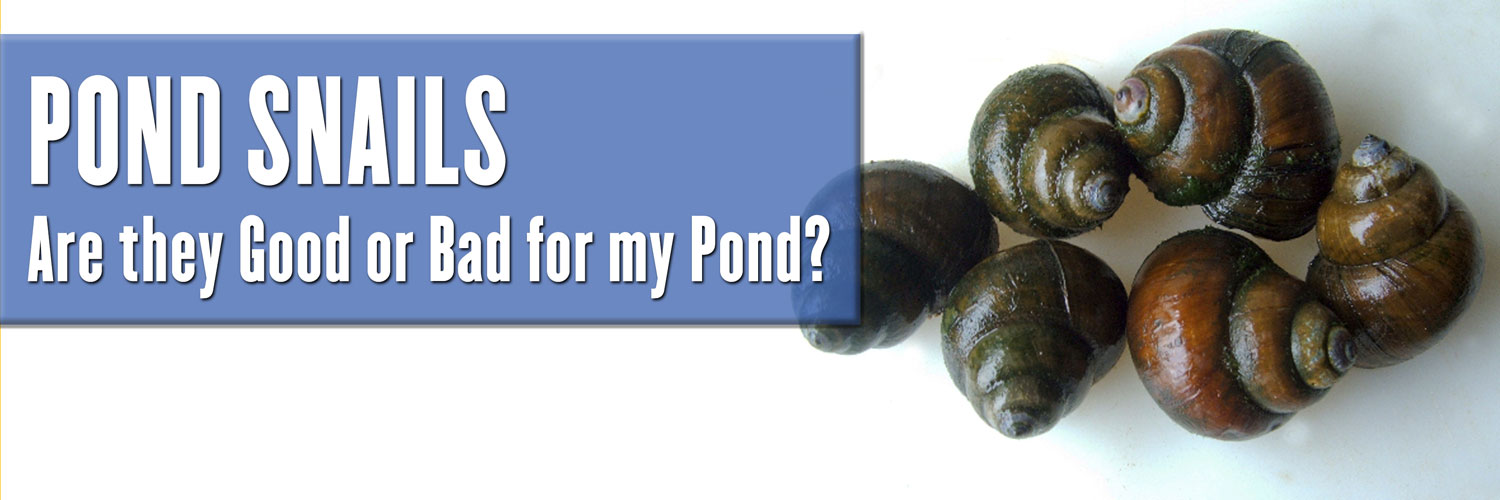Identifying Good and Bad Pond Snails
"Are All Snails Good for my Pond?"
As with anything, there are pros and cons to having snails in your water garden. Here, we identify the most common snails found in a backyard pond and discuss what they can do (or not do) in the water.

Trapdoor Snail
> Good for your pond and the only snail we recommend having in your pond.
The trapdoor snail is the most commonly purchased pond snail by pond owners. They are known for their voracious appetite for string algae and dead vegetation. This is why they have a reputation for “cleaning” up the pond. They are the only pond snails that are live-bearing, meaning they only reproduce a couple of times a season.
Trapdoor snails are usually about the size of a quarter with a hinged flap (trapdoor) on their underside. When they are spooked or disturbed, they let go of whatever surface they are on and close up tightly.
Using crushed oyster shells in your pond cab add extra calcium to the water for thicker, stronger shells.
Ramshorn Snail
> Not really good for your pond.
Their self-explanatory shape is of course what gives them their name. These snails can be used in place of a trapdoor snail in a pinch, although they reproduce more rapidly by laying eggs.
When you begin to see jelly like globs on rocks, plant pots and or pond liner then you are about to acquire a fresh batch of baby snails.
They are herbivores, but will only likely bother your pond plants if there is not enough algae to sustain them.
Apple Snail
> Not good for your pond.
The apple snail enjoys tropical conditions year-round.
Although you may not have purchased one at a pond store, they may have hitched a ride on your tropical plants.
These snails grow very large, very quickly. If there is not enough algae to eat, they will begin to devour your pond plants as well.
You will know you have these snails if you see trails of red orbs left on your plants or on the side of your pond just above the water’s surface.
Great Pond Snail
> Not good for your pond.
The great pond snail is somewhat of a nuisance in the water garden world.
They can easily be identified by their distinct pointed shape, like an ice cream cone. Great pond snails mature in only 6-8 weeks, multiply readily and lay up to 100 eggs each time.
They show up uninvited, eat pond plants, reproduce rampantly and clog filters and pumps.
Some pond predators, like racoons, muskrats and some water-dwelling birds will eat snails.
As you can see, there are snails who help and those who will hinder pond life. You should now be able to identify who’s who and decide whether or not you want it in your pond.
